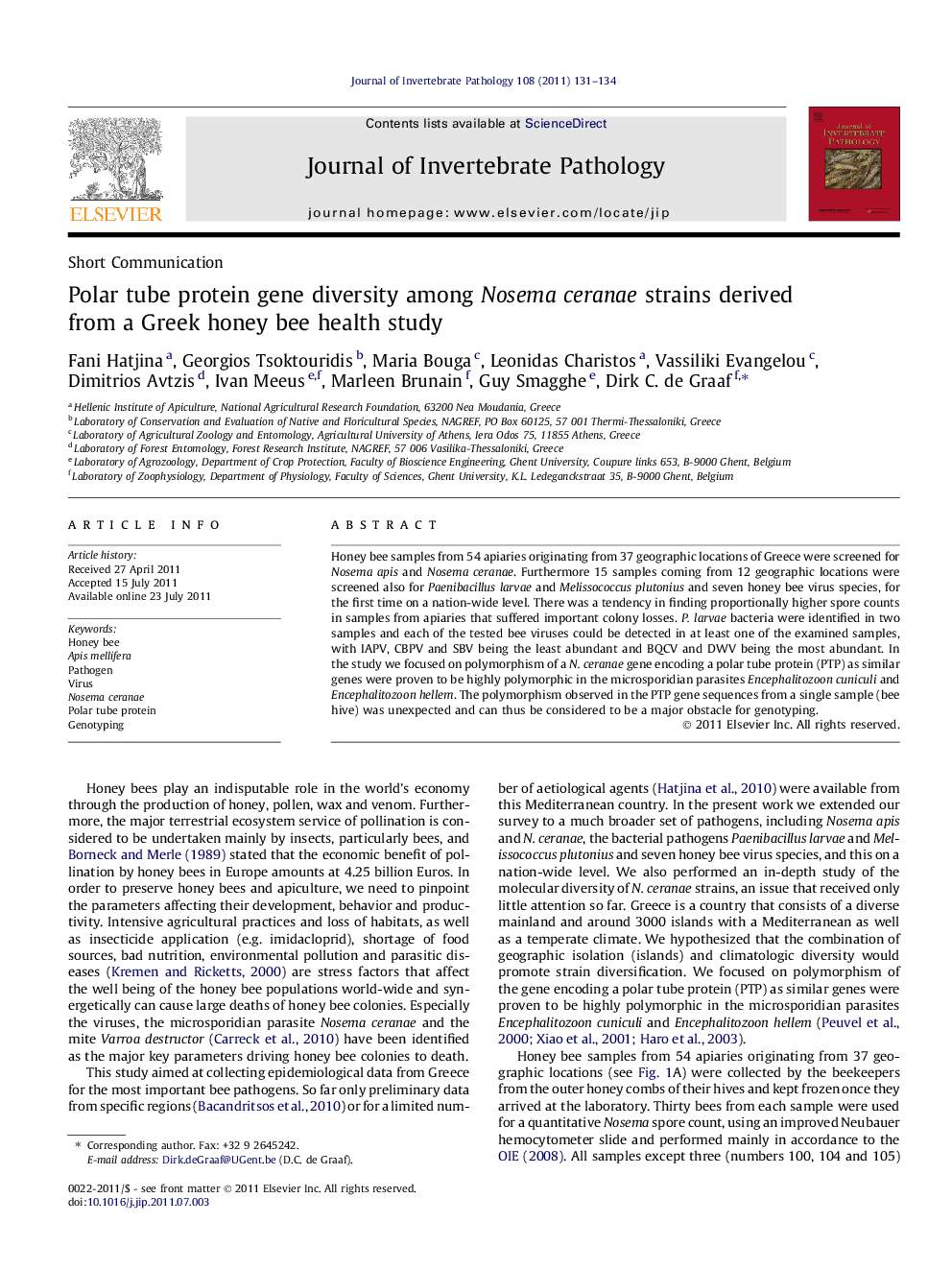| Article ID | Journal | Published Year | Pages | File Type |
|---|---|---|---|---|
| 4557964 | Journal of Invertebrate Pathology | 2011 | 4 Pages |
Honey bee samples from 54 apiaries originating from 37 geographic locations of Greece were screened for Nosema apis and Nosema ceranae. Furthermore 15 samples coming from 12 geographic locations were screened also for Paenibacilluslarvae and Melissococcus plutonius and seven honey bee virus species, for the first time on a nation-wide level. There was a tendency in finding proportionally higher spore counts in samples from apiaries that suffered important colony losses. P. larvae bacteria were identified in two samples and each of the tested bee viruses could be detected in at least one of the examined samples, with IAPV, CBPV and SBV being the least abundant and BQCV and DWV being the most abundant. In the study we focused on polymorphism of a N. ceranae gene encoding a polar tube protein (PTP) as similar genes were proven to be highly polymorphic in the microsporidian parasites Encephalitozoon cuniculi and Encephalitozoon hellem. The polymorphism observed in the PTP gene sequences from a single sample (bee hive) was unexpected and can thus be considered to be a major obstacle for genotyping.
Graphical abstractFigure optionsDownload full-size imageDownload as PowerPoint slideHighlights► There was a tendency in finding higher Nosema spore counts in samples from apiaries that suffered colony losses. ► Each of the seven tested bee viruses could be detected in at least one of the examined samples. ► The gene encoding the Nosema ceranae polar tube protein is highly polymorphic even when coming from a single sample. ► This can be considered to be a major obstacle for genotyping.
